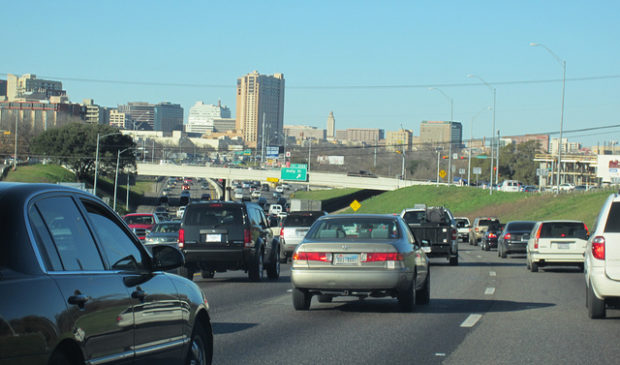Austin’s Strategic Mobility Plan supports Cap Metro’s Project Connect
Tuesday, November 27, 2018 by
Jessi Devenyns Austin’s Capital Metro recently released its revamped Project Connect plan, which it hopes to put before voters in 2020, and this time it has integrated its plans with the city’s overall strategy.
The last time Austin laid out a transportation plan was in 1995, and at that time, it was not intimately woven into the public transit plans Capital Metro was executing. Today 74 percent of Austin drivers opt for single passenger vehicles as their primary mode of transportation.
At the Nov. 13 meeting of the Urban Transportation Commission, Annick Beaudet, the assistant director of the Austin Transportation Department, shared with commissioners that if you extrapolate that percentage to 2040 and factor in the expected population growth, Austin traffic will be at a standstill.
Even to keep congestion at current levels, she said, “We saw that we needed to move that mode share to fifty-fifty split for 2040.”
Beaudet noted that the Austin Strategic Mobility Plan does not outline a solution for how to fix this issue. Merely that “with this plan, we’re saying that it (a multimodal solution) is needed.”
Not only does Austin need a solution to its ever more pressing traffic congestion, but according to studies done by the city, the public wants alternative solutions. So the transportation department is conducting focus groups over the next couple of months as well as collecting public input through an online survey. Beaudet noted that input is so vital that they are offering a $30 gift card to HEB for all individuals willing to participate in the focus groups.
While comments from all residents are welcome, the city is particularly interested in hearing from youth, seniors, people of color, and those with mobility impairments, all groups that have historically been underrepresented in Austin’s planning initiatives.
So far, Beaudet said, Austinites have told the department that affordability, commuter delay, travel choice, and health and safety are the most important issues on their minds. Innovation, which plays a large role in Capital Metro’s current Project Connect plan, was ranked last in the list of priorities.
“They (Austinites) want a plan that’s going to work, and they want a plan that was going to work 10 years ago,” said Commissioner Jonathon Gins. He suggested that the city get down to “brass tacks” and start implementing a system that is proven to work rather than spend time studying the innovative solutions of the future.
Although futuristic solutions are attractive on paper, at the moment, the commissioners and city staff agreed that practicality is the name of the game for Austin. “What do we need to do to be able to move people in 2040 and 2045?” Beaudet asked rhetorically. To do so, she said any policy that is implemented must prioritize multimodal transit.
Beaudet was unable to specify what policy would alleviate Austin’s seemingly perpetual congestion problems. However, she did note that her team has been working closely with Capital Metro to integrate its transit plan into the city’s overall transportation strategy. While both projects are currently conceptual and do not have any solutions set in stone, the two initiatives are hoping to concretize their paths forward by the end of next year.
The final draft of Austin’s Strategic Mobility Plan will be out for formal comment at the beginning of 2019.
Photo by Steve, made available by a Creative Commons license.
The Austin Monitor’s work is made possible by donations from the community. Though our reporting covers donors from time to time, we are careful to keep business and editorial efforts separate while maintaining transparency. A complete list of donors is available here, and our code of ethics is explained here.
You're a community leader
And we’re honored you look to us for serious, in-depth news. You know a strong community needs local and dedicated watchdog reporting. We’re here for you and that won’t change. Now will you take the powerful next step and support our nonprofit news organization?






